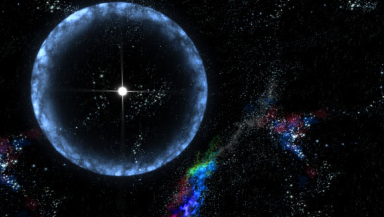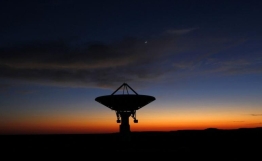
Just late last month, scientists moved a step closer to understanding powerful transient radio flashes in the universe known as "fast radio bursts" (FRBs) by being able to pinpoint their exact source.
A few weeks after this breakthrough, however, the mystery surrounding these powerful radio waves seems to have gotten deeper.
FRBs have been long thought to just exist as quick explosions, much like a camera flash in outer space. However, astronomers recently spotted an FRB that does not look like a flash, but whose appearance is more similar to a strobe light, or a crooked line of bright light.
Author Jason W. T. Hessels, associate scientist at ASTRON, the Netherlands Institute for Radio Astronomy, explained that this bizarre new discovery indicates that FRBs exist not just in a single burst but also as multiple bright bursts of radio waves.
"It's possible that so far we've only seen the brightest FRB bursts," Hessels explained in an article on Space.com.
His team was able to spot 11 repeating radio bursts from the same source using the Arecibo Telescope, the largest and most sensitive radio telescope on the planet located in Puerto Rico.
"Because of Arecibo's much higher sensitivity, we can see much weaker pulses, and hence the chances of detecting repeats are higher," the astronomer explained.
Hessels further explained that these multiple radio bursts are not regular astronomical events.
"We also have plenty of hour-long observations that show nothing," he said.
The astronomer, however, shared one instance when his team was able to observe six bright pulses over a 15-minute period, which he described as a "fantastic observation."
Hessels theorised that these multiple radio bursts could be attributed to the reconfiguration of the magnetic field of a magnetar, which is a super-magnetised version of the extremely dense core left behind by a star that already exploded.














